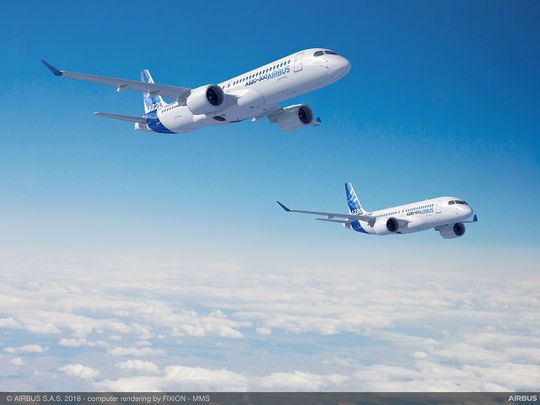
Dubai: Airbus’ Middle East operations is refocusing on its single-aisle options, believing these aircraft types would be the first to see a definite improvement in demand.
“Our assessment is that air traffic would reach its 2019 levels again between 2023 and 2025,” said Mikail Houari, the Middle East and Africa President for the world’s largest plane-maker. “Therefore, the single-aisle market is expected to lead the recovery, while wide-body should take longer.”
Single-aisles typically can carry around 200-250 passengers.
In July, two of Airbus’ deliveries in the Middle East were narrow-body aircraft - an A220-300 to Egypt Air and a A321neo to Lebanon’s Middle East Airlines. Single-aisle aircraft are starting to make much commercial sense for airline, with passenger demand for shorter routes expected to see better recovery rates in the coming weeks and months. And on such routes, single-aisles can do the needful at much lower operating costs.
Regional airlines that had already placed orders for new aircraft are trying to switch the mix and get more single-aisle options, looking at the pattern of passenger demand for the next few years.
Houari is optimistic that the industry will find a way to recover and rebuild. “Whether it is new routes, new partnerships or different service models, airlines will find ways to adapt,” he said. “Some may not survive… and new airlines may emerge.”
That grim, yet realistic, outlook mirrors that put out by the industry grouping IATA (International Air Transport Association). It expects a full recovery only by 2024 and much dependent on a vaccine being found for the coronavirus.

Much riding on region’s prospects
The Middle East had been one of the fastest-growing regions for travel before the COVID-19 crisis – passenger traffic was forecast to grow at a rate of 5.6 per cent and well above the global average of 4.3 per cent a year.
These markets will also be the fastest to recover due to its geographic location at the center of the world, Houari said.
UAE’s airlines are slowly finding their feet after the enforced idling of passenger services to combat the pandemic.
Etihad, which recently posted operating losses of $758 million for the first-half of this year, aims to increase its flight frequency to half its pre-COVID-19 capacity. Emirates airline is gradually expanding its passenger services to 70 cities by the end of this month.
“A factor that will contribute to swift recovery is government interest,” the Airbus executive said. “Aviation and tourism have been high on the agenda of regional governments, which have invested heavily in advanced airlines and infrastructure.”
That’s not how Airbus sees it. In June, the company completed its ‘autonomous taxi, take-off and landing’ (ATTOL) project after conducting over 500 flights. The main objective is to accelerate Airbus’ understanding of autonomy-enabling technologies in real conditions.
The project could in time open the way to deploy auto-land functions at airports and more robust positioning capability for future aircraft architecture. But there is no plan to roll this project out commercially, said Mikail Houari of Airbus.
“In terms of autonomous flying, the UAE has previously made its ambitions clear,” he said, citing Dubai’s Smart Autonomous Mobility Strategy, which seeks to transform a quarter of the total mobility journeys into autonomous transport by 2030.
That’s not all. Three years ago, the Roads and Transport Authority (RTA) conducted a test run of the first Autonomous Air Taxi capable of carrying two passengers.








